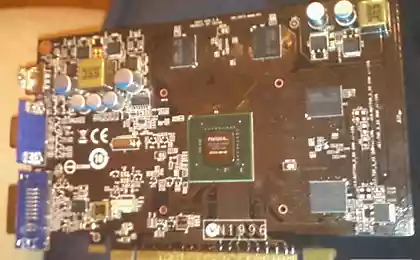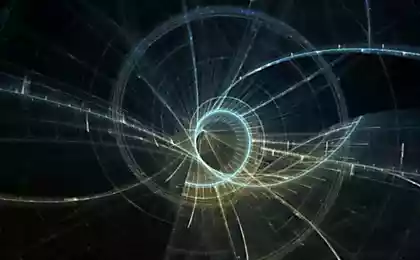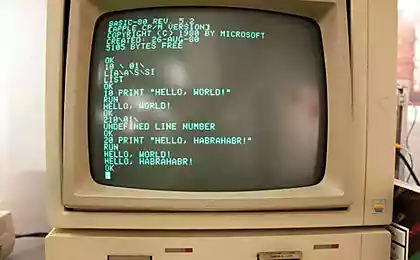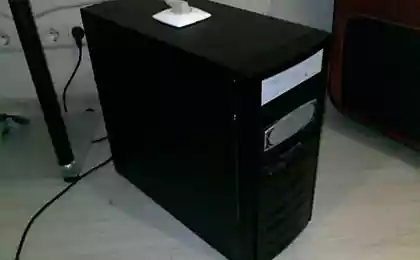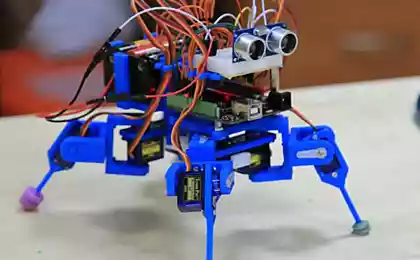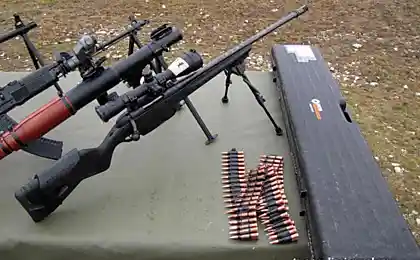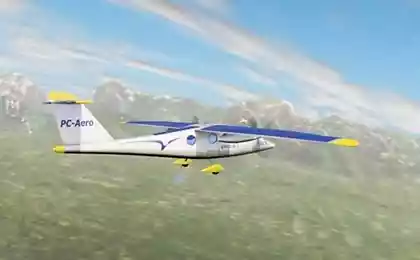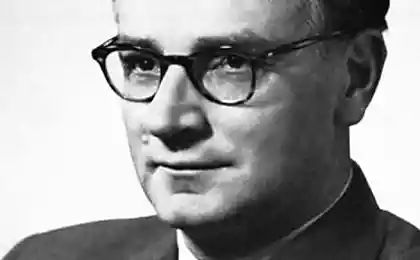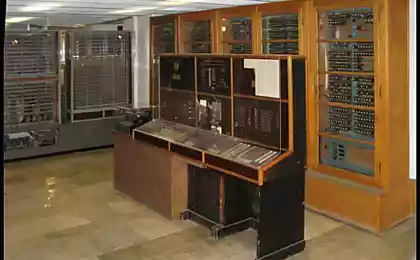Silent computer: only clippers and a soldering iron. Success Story
We - the desktop. We sit to work - writing code or seal watching, and this box is roaring nearby. We have pliers, soldering iron, blue electrical tape, a little wire, a little shrinking tube and basic knowledge in electrical engineering and computer device. Is it possible somehow to scratch the box so that it at least a little quieter roared?
First two simple problems of theory. We're talking about the noise of cooling.
Why rustles computer? Because the fans are spinning.
And how much noise the computer, and how it depends on the fans?
Let's solve a simple problem: so here Trykov - and the fan speed will drop in half. How many decibels to reduce the noise?
Fans - this is important, it is the removal of heat, electronics should not overheat.
Then another challenge: the cooler blows processor. CPU temperature of 35 degrees Celsius. And then suddenly increased processor heat twice. What will be the temperature of the CPU?
The noise of the system unit is made up of the noise generated by the coolers and the noise drives.
Skip hard drives, it can not be changed and it is not the main source of noise.
Where does the noise of the cooler? Air over the radiator - again, and the noise of the mechanics of the cooler: runout in the bearings, the sounds of the windings of the cooler (uneven mounting cores magnetostriction etc.)
Turbulence h5> Calculate число Reynolds system cooler radiator.
Re = (flow rate) * (characteristic size) / (kinematic viscosity)
According to the исследованию, cooler performance ranges of 20-60 cubic meters per hour, or 0 005 - 0 015 cubic meters / sec. Assume 0, 01 cubic meters / sec as the average over the hospital coolers.
The diameter of the secondary cooler Example 7 cm = 0, 07 m.
Then the flow rate = (capacity) / (area) = 0, 01 / (pi * 0 07 * 0 7.4) = 2, 6 meters per second
The characteristic size we already have - it's diameter.
Then Re = (2, 6) * (0, 07) / (16/1000000) = 11000
According to the same Вики, and other sources, at this Re number for air is turbulent
For turbulent flow in the air vortices arise. Whirlwind - self-education, breaking away from the fan blades, the vortices form a racing air pressure. The same happens when struck vortex formation on a solid surface. Pressure jumps from numerous eddies and create the same noise sound that comes from running cooler.
Can I do for laminar, that is irrotational, that there was no noise? Even at lower air flow rates four times for remain turbulent vortex (Re number becomes equal to 2500).
However, there is an intuitive assumption that the reduction in the air flow rate will reduce the emitted noise. More about this later.
Noise mechanics cooler.
All the sound effects from the mechanics of the cooler is directly dependent on the forces that create the current flowing through the windings. The nature of these sound effects is diverse and complex, and then speculate on the fingers of no meaning. However, it is obvious that when the current flowing through the coil, and in reducing the speed of the cooler sound effects will diminish.
Indeed, why speculate on the fingers if there is here is a study . It is dedicated to the fans, but cooler - this is the fan, all the conclusions are valid. It figuiruet only the flow rate, but the theory of the fan should that air flow and hence the flow rate directly proportional to the rotational frequency (rpm). Reduces twice the speed - half the rate of flow.
So, all the noise is proportional to the fan speed. To quote the study
It is known that the turbulent noise source is the quadrupole type, and the sound power is proportional to ~ u8, and vortex noise is a source of dipole type, and its sound power ~ u6, where u - peripheral speed. When reducing speed also reduces noise and rotation, which has a dipole (noise load) and exclusive (noise displacement) nature, and their sound power is proportional to ~ u6 and ~ u4, respectively. Blockquote> So, turbulent noise power is proportional to the eighth (! ) degree rotation frequency. That is the sound pressure level of the noise is proportional to the fourth power of the frequency (level = root = root of the power of the 8 degree = 4 degree).
Wow!
That volume bar (figures in dB)
Hearing threshold 0
Ticking wristwatches 10
Whisper 20
Sound wall clock 30
Muffled conversation 40
Quiet street 50
Normal conversation 60
Noisy street 70
We take on this scale, the volume level of the system unit 65 dB - average between normal conversation and noisy street.
Reduced fan speed halved the noise from turbulent air flow in the 2 ^ 4 = 16 times, or 24 dB, ie the volume level is set to become muffled conversation. Good effect!
Thermodynamic calculation
We wrote above - reduce speed by half. Why two? Why not twenty? Or even turn off the fans, no noise would not be? After all, you want some air flow for cooling, then we reduce it - and what will happen, for example, with the processor?
Let's solve the problem, which in the beginning of the post.
So, the CPU temperature = 35 degrees, nominally blown CPU heatsink cooler, the flow rate does not change.
Processor heat increased in two times. What is the temperature of the processor at a constant flow of air?
Consider the process of blowing. Imagine that the system is "cooler-radiator-processor" - a black box that gives off heat airflow. The amount of heat is proportional to the temperature difference processor and ram air inlet, i.e. (CPU temperature - the temperature in the cooler incoming air).
Inlet temperature = tmperature inside the system unit. Assume it is 30 degrees.
Total temperature difference processor and ram air = 35 - 30 = 5 degrees. If the processor is two-fold increase in heat dissipation, temperature difference, too, will double, that is, becomes equal to 5 * 2 = 10 degrees.
A CPU temperature will be equal to the temperature difference between the + = 30 + 10 = 40 degrees (instead of 70, that immediately come to mind) blockquote>
And what happens to the temperature of the processor, if you reduce the flow rate of the cooling twice?
According to Handbook of physics Kuhling K i> the amount of heat carried away from the surface of the "air-solid wall" in proportion to the temperature difference and the root of the air velocity. If the reduced air flow rate twice that for removing the same amount of heat will increase the temperature difference at the root of two times, that is approximately 1 and 4 times.
The final formula:
Tprotsessora Tvozduha = + (initial Tprotsessora - Tvozduha) * (root (the rotational speed of the initial / final rotation speed)) blockquote>
Perform a couple of real calculations of practice.
Tprotsessora initial = 42 degrees
Tvozduha = 20 degrees (system unit is open)
The rotation speed is reduced to 2-fold (from 2000 to 1000 rpm)
Tprotsessora = 20 + (42-20) * 1 = 51 degrees 4 blockquote>
zhesche conditions
Tprotsessora initial = 60 degrees (old hot Athlon)
Tvozduha = 20 degrees (system unit is open)
The rotational speed is reduced by 2.5 times (from 2000 to 800 rpm)
Tprotsessora = 20 + (42-20) * 1 = 76 degrees 4 blockquote>
We see that even in the hot CPU (temperature difference = 40 degrees) and reducing the speed of 2, 5 times (= noise reduction of 31 dB), the CPU temperature is within the acceptable range with a good margin.
Here on the knee test results on a processor Core i5 series 3, it is seen that even in the stress test temperature while reducing the speed of 2, 5-fold increase of a few degrees.
Total: theoretically reduce the speed of rotation ventilyatrov at 2-2, 5 times safe for electronics, which cools them
How to reduce the fan speed? Reduce the supply voltage.
And it depends on the speed of rotation of the supply voltage? Approximately linear cm. Above the plate.
Getting to modernize the system unit
First, fans have at least two - one in the power supply and a processor. Maybe one on the video card, on older models - and even on the motherboard.
What do we do:
1) Turn off all fans of + 12V
2) combine them together and connected to + 5V
3) test
1) So, to get and parse the PSU.
Fan just gently nibble on the board (there may be a connection, and can not be, it does not matter). Solder long provodochki to wire from the cooler, derive their outward
Nibble otkulera processor all the wires, do the same operation. A CPU cooler may be three or four wires, respectively. ground, + 12V, and a rotation sensor (otsionalno) speed control. We are interested only + 12V, ground, and all the rest can be left directly in the connector
But you can bite off the ground and + 12V, it is better (it Pentium4)
If there is a cooler on the video card - is the same: to bite off and lengthen the wires
Another video card is the GeForce 8600 gts
Warning!
1) verify the reliability of solder joints by pulling their strength
2) Do not use electrical tape for insulation. Only shrink tubing, electrical tape - only for temporary mechanical fixation wires
3) Starting from the principle that all that can be closed - certainly closes, all that can fall off - drop off
We can reduce the rate of air flow radiator, but if you suddenly some node on the go will be left without blowing (dumps soldering for example), you'll know about it when the node fails. Do securely.
B> i>
2) connect all the wires from the coolers, observing polarity. That will have two wires - plus and minus the refrigeration system of the computer (all coolers connected together).
Next arises the problem - how to connect to the power connector. You can use pins and unsolder the old CD / DVD drive, or a faulty hard drives (this is better, more reliable - not vydernesh)
or pins on the motherboard. But such a connection then it is necessary to fix mechanically, at least at first, tape, pins are kept much weaker
3) check everything carefully, pull the wires - so suddenly flew out of nothing. Ready for inclusion
Getting Started
Be prepared to quickly see all the fans immediately after switching on.
Turn!
Quickly inspect and check the fans - they all need to be twisted. If suddenly some stands - just turn it off (this situation we consider below)
If all the fans are spinning - approx. PSU fan can be checked by applying a piece of paper to BP - should feeble blow.
Ok
You can begin to swear BIOS - supposedly not spinning fan PSU or low speed or not regulated. Go into the BIOS, set the CPU FAN to ignore
Ok
Everything! Enjoy the silence!
Run anything that shows CPU temperature - CoreTemp , RealTemp etc. Monitor the temperature of the first few days. Looked at the fans.
And enjoy the silence!
How a computer works quietly after such alteration? B>
Very quiet. Heard only a hard disk.
Is there a risk of such alteration? B>
No. You can always switch the power to all the fans back to the + 12V, get back exactly the same thing, and that was
What to do in a situation where one of the fans is not spinning when you turn? B>
Perhaps it lacks the torque to start (although this situation has never been observed). In this case, the power to all the fans do not 5B and 7B. How?
We supply + 5V + fan was connected to + 5V and ground the fan to the ground. + Connect fans to the + 12V and ground - to + 5V. In this case, the fan will be 12-5 = 7V. You will see a little noise, however it is much quieter than it was.
How many computers were converted in this way? B>
The author of these lines since 2008, personally upgraded several dozens of various types: from Pentium4 to Core i5. The entire line of Intel processors between the above: Core2Duo, Celeron G ***, Pentium G *** and so on. Cars on AMD processors smaller, but still - the old socket 939 to the new.
Have gamer or razgnannye overklokovskie computers? B>
No, and here it is necessary to consider whether such modernization for these computers.
Were there problems? B>
Related moderniztsiey (overheating, failure of refrigerated units) - no
How long does such modernization? B>
Approximately two to three hours
How to behave in this way upgraded computers in the summer? B>
As usual. Failures recorded
Any extra. measures of service?
Perhaps there is more sense to blow the dust and clean the computer. Incidentally, in this computer dust accumulates less (probably due to the smaller volume of air traversed)
What's the know-how? B>
Nothing. The method described above is well-known electronics and actively used. Auto publish just tried to bring under a modernization theoretical basis and showed examples of practical implementation.
Can I do something like that on laptops? B>
No way! Electronics Laptop works in very severe conditions of thermal and cooling system is different from the desktop.
UPD And in conclusion. Yet before you do anything with the cooling system, watch the temperature of your processor some time. If you constantly, for example, do video processing, the processor is busy for days at 100%, and its temperature, for example 85 degrees constantly, you do not need to modify the cooling system. B>
(But this situation applies, rather, to the point of gaming / overclocking machines)
Source: habrahabr.ru/post/239061/
See also:
bashny.net/admin/2013/04/17/kak-otdohnut-v-feodosii.html




